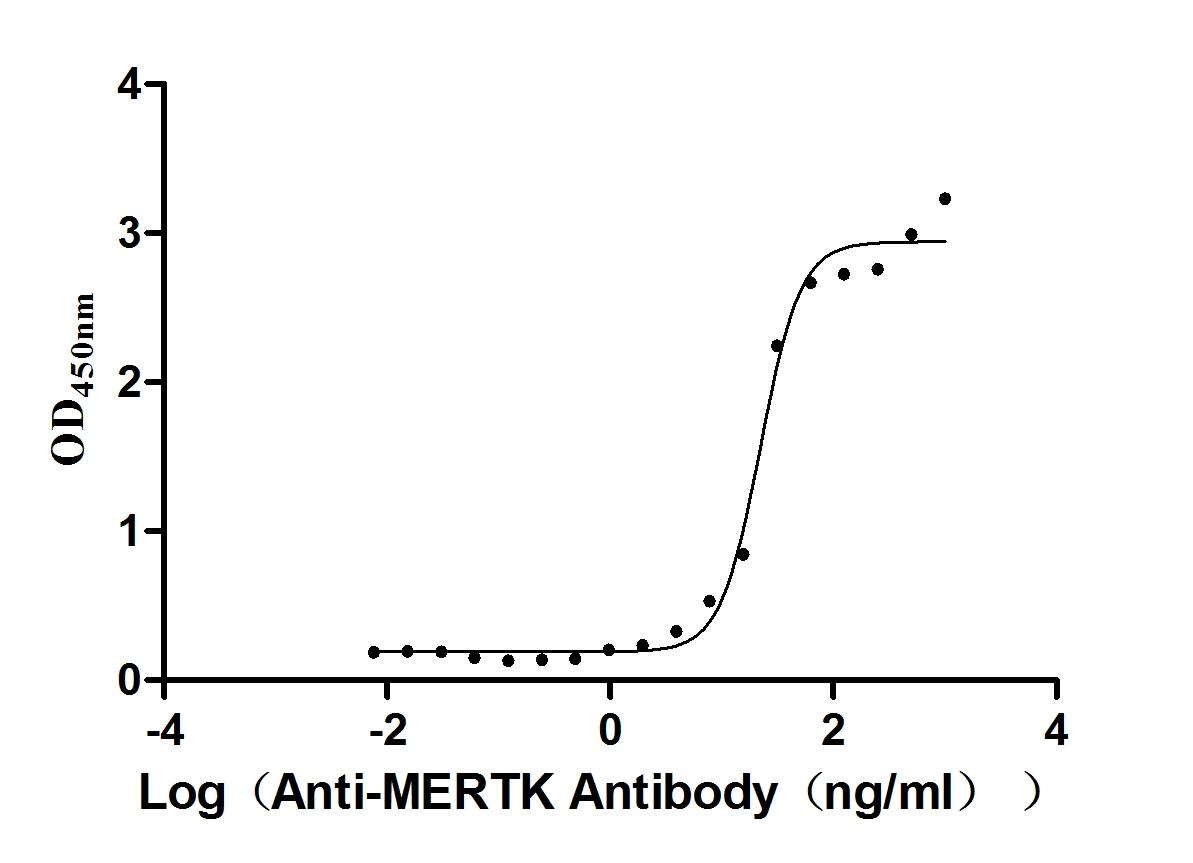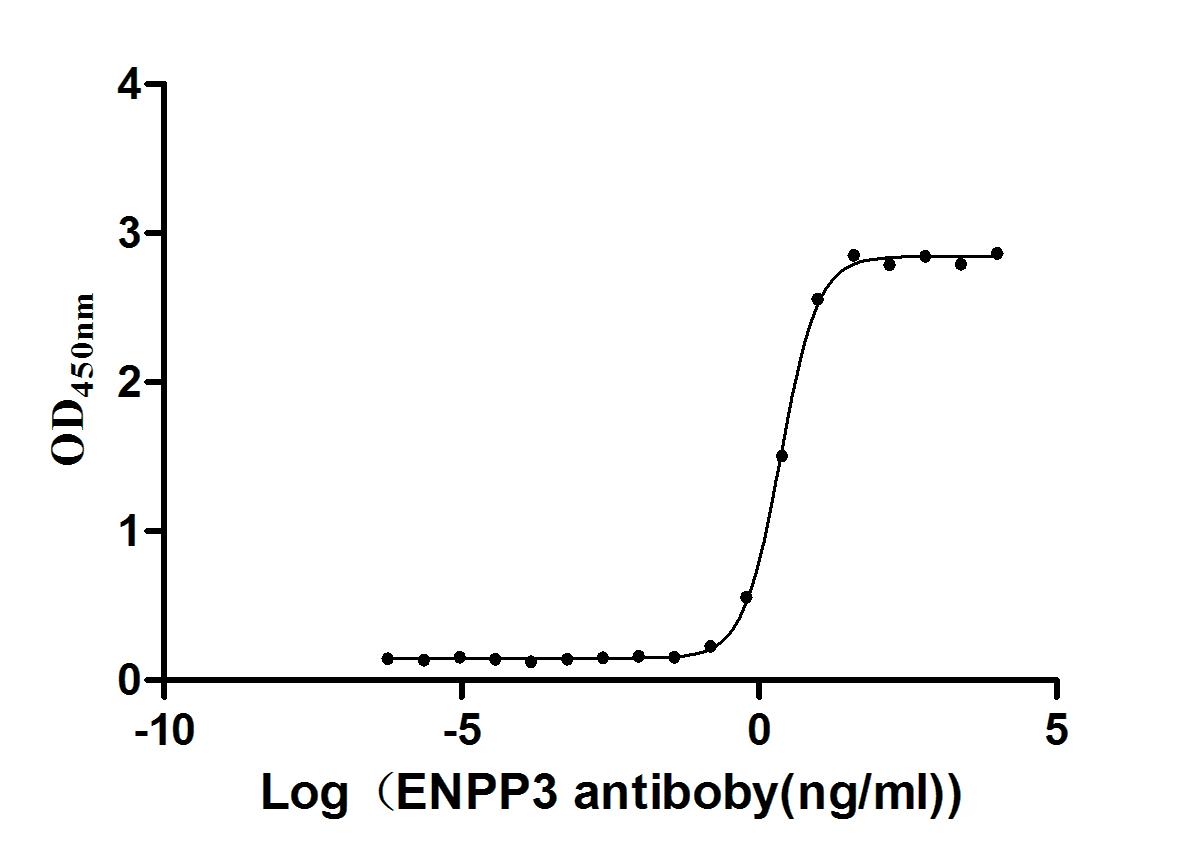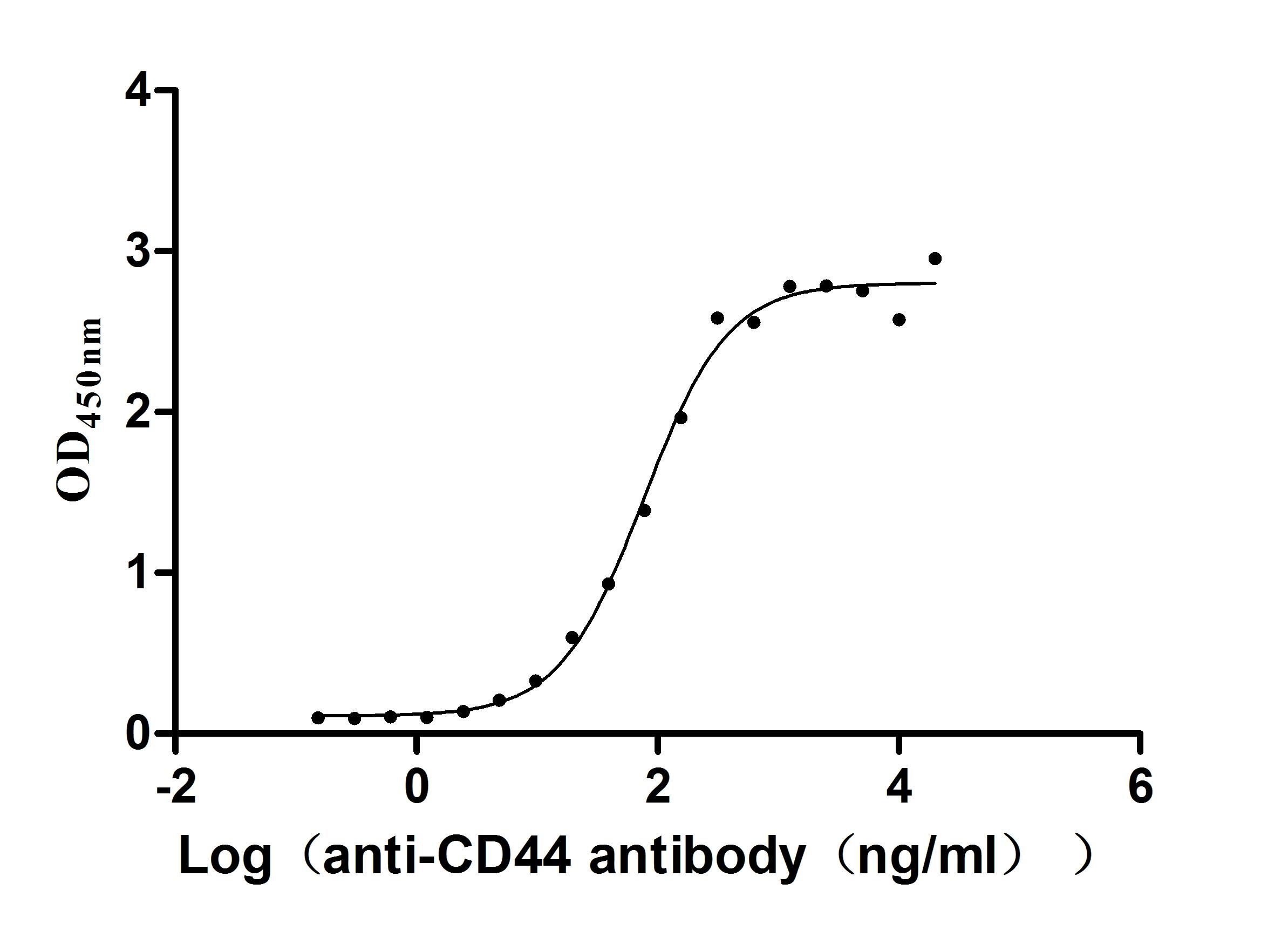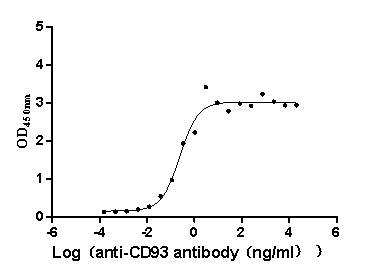Recombinant Human DNA excision repair protein ERCC-8 (ERCC8)
-
中文名稱:人ERCC8重組蛋白
-
貨號:CSB-YP621655HU
-
規格:
-
來源:Yeast
-
其他:
-
中文名稱:人ERCC8重組蛋白
-
貨號:CSB-EP621655HU
-
規格:
-
來源:E.coli
-
其他:
-
中文名稱:人ERCC8重組蛋白
-
貨號:CSB-EP621655HU-B
-
規格:
-
來源:E.coli
-
共軛:Avi-tag Biotinylated
E. coli biotin ligase (BirA) is highly specific in covalently attaching biotin to the 15 amino acid AviTag peptide. This recombinant protein was biotinylated in vivo by AviTag-BirA technology, which method is BriA catalyzes amide linkage between the biotin and the specific lysine of the AviTag.
-
其他:
-
中文名稱:人ERCC8重組蛋白
-
貨號:CSB-BP621655HU
-
規格:
-
來源:Baculovirus
-
其他:
-
中文名稱:人ERCC8重組蛋白
-
貨號:CSB-MP621655HU
-
規格:
-
來源:Mammalian cell
-
其他:
產品詳情
-
純度:>85% (SDS-PAGE)
-
基因名:
-
Uniprot No.:
-
別名:CKN1; Cockayne syndrome type A; Cockayne syndrome WD repeat protein CSA; CSA; DNA excision repair protein ERCC-8; DNA excision repair protein ERCC8; ERCC 8; ERCC8; ERCC8_HUMAN; excision repair cross-complementing rodent repair deficiency, complementation group 8
-
種屬:Homo sapiens (Human)
-
蛋白長度:full length protein
-
表達區域:1-396
-
氨基酸序列MLGFLSARQT GLEDPLRLRR AESTRRVLGL ELNKDRDVER IHGGGINTLD IEPVEGRYML SGGSDGVIVL YDLENSSRQS YYTCKAVCSI GRDHPDVHRY SVETVQWYPH DTGMFTSSSF DKTLKVWDTN TLQTADVFNF EETVYSHHMS PVSTKHCLVA VGTRGPKVQL CDLKSGSCSH ILQGHRQEIL AVSWSPRYDY ILATASADSR VKLWDVRRAS GCLITLDQHN GKKSQAVESA NTAHNGKVNG LCFTSDGLHL LTVGTDNRMR LWNSSNGENT LVNYGKVCNN SKKGLKFTVS CGCSSEFVFV PYGSTIAVYT VYSGEQITML KGHYKTVDCC VFQSNFQELY SGSRDCNILA WVPSLYEPVP DDDETTTKSQ LNPAFEDAWS SSDEEG
-
蛋白標簽:Tag?type?will?be?determined?during?the?manufacturing?process.
The tag type will be determined during production process. If you have specified tag type, please tell us and we will develop the specified tag preferentially. -
產品提供形式:Lyophilized powder
Note: We will preferentially ship the format that we have in stock, however, if you have any special requirement for the format, please remark your requirement when placing the order, we will prepare according to your demand. -
復溶:We recommend that this vial be briefly centrifuged prior to opening to bring the contents to the bottom. Please reconstitute protein in deionized sterile water to a concentration of 0.1-1.0 mg/mL.We recommend to add 5-50% of glycerol (final concentration) and aliquot for long-term storage at -20℃/-80℃. Our default final concentration of glycerol is 50%. Customers could use it as reference.
-
儲存條件:Store at -20°C/-80°C upon receipt, aliquoting is necessary for mutiple use. Avoid repeated freeze-thaw cycles.
-
保質期:The shelf life is related to many factors, storage state, buffer ingredients, storage temperature and the stability of the protein itself.
Generally, the shelf life of liquid form is 6 months at -20°C/-80°C. The shelf life of lyophilized form is 12 months at -20°C/-80°C. -
貨期:Delivery time may differ from different purchasing way or location, please kindly consult your local distributors for specific delivery time.Note: All of our proteins are default shipped with normal blue ice packs, if you request to ship with dry ice, please communicate with us in advance and extra fees will be charged.
-
注意事項:Repeated freezing and thawing is not recommended. Store working aliquots at 4°C for up to one week.
-
Datasheet :Please contact us to get it.
靶點詳情
-
功能:Substrate-recognition component of the CSA complex, a DCX (DDB1-CUL4-X-box) E3 ubiquitin-protein ligase complex, involved in transcription-coupled nucleotide excision repair. The CSA complex (DCX(ERCC8) complex) promotes the ubiquitination and subsequent proteasomal degradation of ERCC6 in a UV-dependent manner; ERCC6 degradation is essential for the recovery of RNA synthesis after transcription-coupled repair. It is required for the recruitment of XAB2, HMGN1 and TCEA1/TFIIS to a transcription-coupled repair complex which removes RNA polymerase II-blocking lesions from the transcribed strand of active genes. Plays a role in DNA single-strand and double-strand breaks (DSSBs) repair; involved in repair of DSSBs by non-homologous end joining (NHEJ).
-
基因功能參考文獻:
- Pathogenic nucleotide variant NG_009289.1(NM_000082.3):c.173+1119G>C was identified in two siblings with severe but long-term survival Cockayne syndrome. PMID: 29422660
- A complex intragenic rearrangement of ERCC8 in Chinese siblings with Cockayne syndrome has been reported. PMID: 28333167
- ERCC6 rs1917799, ERCC8 rs158572 and rs158916 demonstrated pairwise epistatic interactions to associate with chronic atrophic gastritis and gastric cancer risk. The ERCC6 rs1917799-ERCC8 rs158572 pair significantly influence ERCC6 and ERCC6-ERCC8 expression. PMID: 28562347
- Loss of Cockayne syndrome group A protein (CSA) or Cockayne syndrome group B protein (CSB) leads to polymerase stalling at non-B DNA in a neuroblastoma cell line, in particular at G-quadruplex structures. PMID: 27791127
- The role of CSA in oxidative stress PMID: 28302478
- Although the absence of CSA had no effect on CSB recruitment, CSA itself localized at sites of interstrand crosslinks, double-strand breaks and monoadducts but not at oxidative DNA lesions. PMID: 26616585
- Our findings suggested that ERCC8 rs158572 and rs158916, alone or together with environmental factors, might be associated with gastric cancer and atrophic gastritis susceptibility. PMID: 26130415
- A novel function of Cockayne syndrome A protein as transcription factor of RNA polymerase I in the nucleolus is shown. PMID: 24781187
- Mitochondrial CSA and CSB: protein interactions and protection from ageing associated DNA mutations. PMID: 23562423
- The role of CSA and CSB protein in the oxidative stress response. PMID: 23562424
- The role of CSA protein in TC-NER is described in this review PMID: 23571135
- The review focuses on the participation of the CSB and CSA proteins in many different protein interactions and complexes, and how these interactions inform us about pathways that are defective in the disease. PMID: 23583689
- KIAA1530 protein is recruited by Cockayne syndrome complementation group protein A (CSA) to participate in transcription-coupled repair (TCR). PMID: 22902626
- CSA and CSB are identified as the key elements of a regulatory mechanism that equilibrate beneficial and detrimental effects of p53 activity upon cellular stress. PMID: 22032989
- crystals of CSA-DDB1 had unit-cell parameters a = b = 142.03, c = 250.19 A and diffracted to 2.9 A resolution on beamline ID14-1 PMID: 22232169
- Studies indicate the modular architecture of DDB1-CUL4 in complex with DDB2, CSA and CDT2 in DNA repair of UV-induced DNA lesions. PMID: 21550341
- High carriers frequency of an apparently ancient founder mutation p.Tyr322X in the ERCC8 gene responsible for Cockayne syndrome among Christian Arabs in northern Israel is reported. PMID: 21108394
- role in protect from aging- and stress-induced mtDNA mutations and apoptosis-mediated loss of subcutaneous fat, a hallmark of aging PMID: 20100872
- The 45 published mutations in CSA and CSB to date and 43 new mutations in these genes together with the corresponding clinical data, are reported. PMID: 19894250
- We found that CSA protein is rapidly translocated to the nuclear matrix after UV irradiation PMID: 11782547
- DDB2 and CSA are each integrated into nearly identical complexes via interaction with DDB1. Both complexes contain cullin 4A and Roc1 and display ubiquitin ligase activity. PMID: 12732143
- The Mutation of Cockayne syndrome type A can also cause defective transcription-coupled repair and Cockayne syndrome. PMID: 16246722
- examines functional relationship between CSA and CSB in Cockayne syndrome PMID: 16751180
- Cockayne Syndrome A and B proteins (CSA) and (CSB) display differential roles in recruitment of transcription-coupled repair (TCR)-specific factors and assembly for TCR occurs without disruption of the UV-stalled RNA polymerase II (RNAPIIo). PMID: 16916636
- Alterations of chromatin at the RNA polymerase II stall site, which depend on CSB and TFIIH at least, are necessary for the UV-induced translocation of CSA to the nuclear matrix. PMID: 17242193
- CSA protein contributes to prevent accumulation of various oxidized DNA bases and underline specific functions of CSB not shared with CSA. PMID: 17297471
- CSA is not required for the ubiquitylation of human RNA polymerase II. PMID: 17996703
顯示更多
收起更多
-
相關疾病:Cockayne syndrome A (CSA); UV-sensitive syndrome 2 (UVSS2)
-
亞細胞定位:Nucleus. Nucleus matrix.
-
數據庫鏈接:
Most popular with customers
-
Recombinant Human Programmed cell death 1 ligand 1 (CD274), partial (Active)
Express system: Mammalian cell
Species: Homo sapiens (Human)
-
Recombinant Human Tumor necrosis factor ligand superfamily member 8 (TNFSF8), partial (Active)
Express system: Mammalian cell
Species: Homo sapiens (Human)
-
Recombinant Human Tumor necrosis factor receptor superfamily member 9 (TNFRSF9), partial (Active)
Express system: Mammalian cell
Species: Homo sapiens (Human)
-
Recombinant Human HLA class II histocompatibility antigen gamma chain (CD74), partial (Active)
Express system: Mammalian cell
Species: Homo sapiens (Human)
-
Recombinant Mouse Tyrosine-protein kinase Mer (Mertk), partial (Active)
Express system: Mammalian cell
Species: Mus musculus (Mouse)
-
Express system: Mammalian cell
Species: Homo sapiens (Human)
-
Recombinant Macaca fascicularis CD44 antigen (CD44), partial (Active)
Express system: Mammalian cell
Species: Macaca fascicularis (Crab-eating macaque) (Cynomolgus monkey)
-
Recombinant Macaca fascicularis CD93 molecule (CD93), partial (Active)
Express system: Mammalian cell
Species: Macaca fascicularis (Crab-eating macaque) (Cynomolgus monkey)


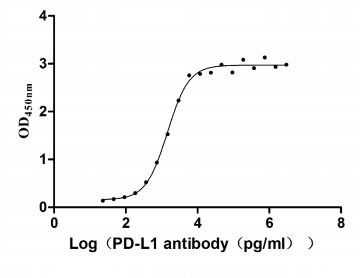
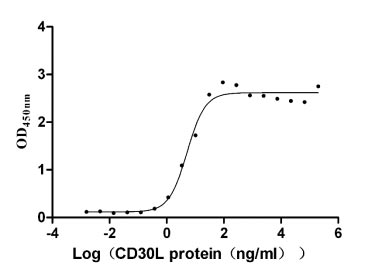
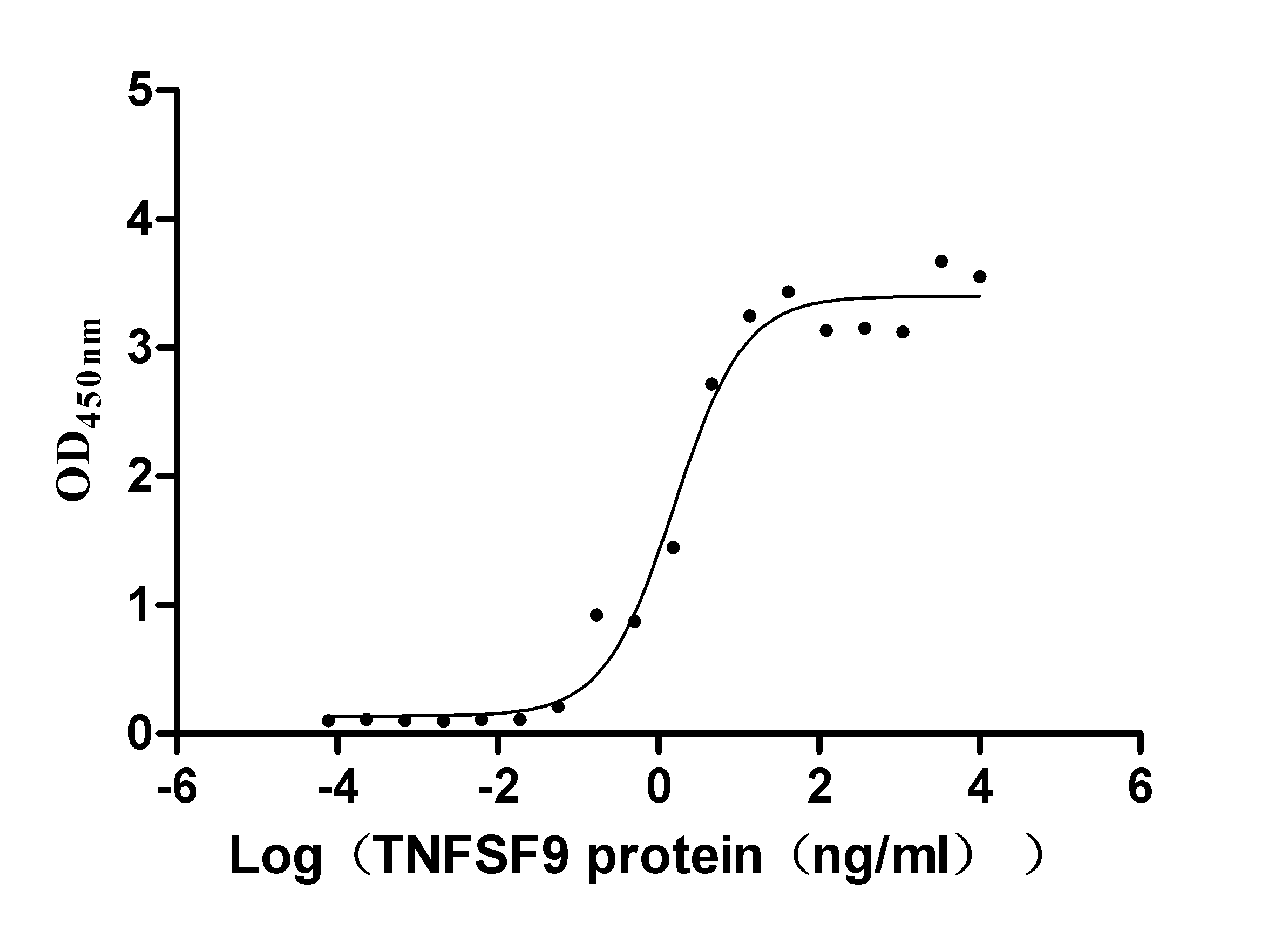
-AC1.jpg)
